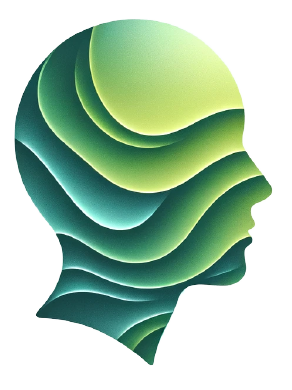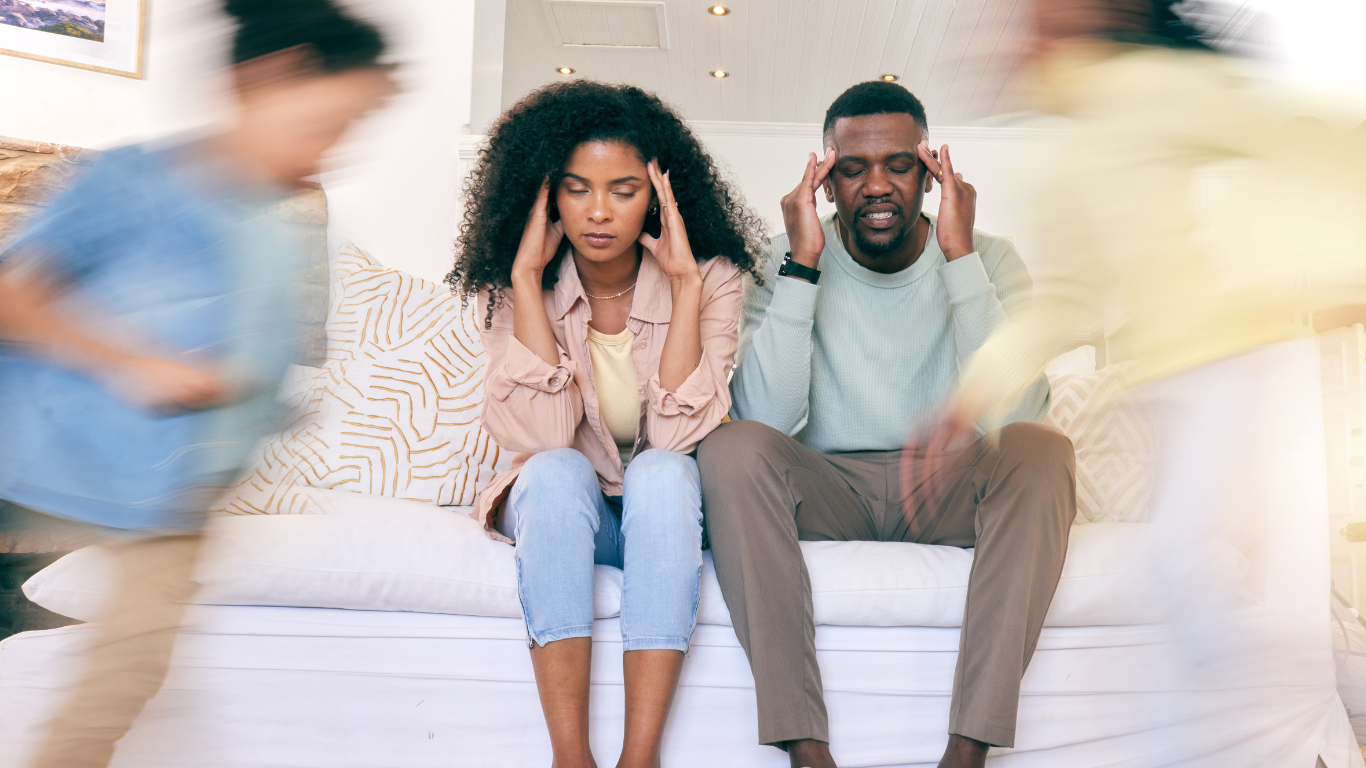Migraine Headache Causes: A Comprehensive Overview


Migraines are a common and complex neurological disorder characterized by recurrent, severe headaches often accompanied by nausea, vomiting, and sensitivity to light and sound. The precise cause of migraine is not yet fully understood. Plus, because migraines can present differently in different people, it’s challenging to answer the question, “What causes migraine?”
A better starting point is to ask, “What causes your migraine?
The answer lies in a combination of genetic, environmental and neurological factors. This article explores the multifaceted causes of migraines, including ocular and aura migraines, chronic migraine causes, triggers, and environmental factors.
You will learn about multiple causes of migraines, including:
- 4 migraine causes that predispose you to attacks
- What causes migraine: ocular, eye, aura, chronic
- 8 migraine triggers
What Causes Migraines: The Role of Your Unique Biology
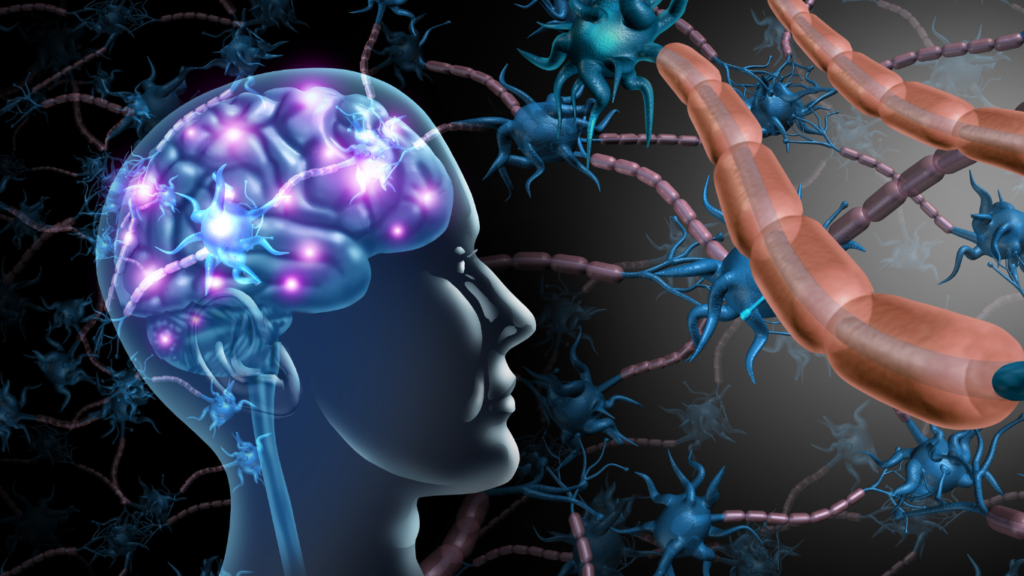
1. Genetic Predisposition:
Many people who suffer migraines have a family history of the condition, suggesting a genetic component. Specific genetic mutations can affect the way the brain processes pain and other stimuli, making some individuals more susceptible to migraines.
2. Brain Chemistry and Neurotransmitters:
Changes in brain chemistry, particularly involving neurotransmitters like serotonin, play a significant role in migraines. Serotonin helps regulate pain in the nervous system, and fluctuations in its levels can lead to the dilation and constriction of blood vessels in the brain, which is a cause of migraine pain.
3. Neurological Hyperexcitability:
The brains of people with migraines may be more sensitive to certain stimuli. This hyperexcitability can cause migraine with the abnormal activation of neurons causing an attack. This can involve cortical spreading depression (CSD), a wave of electrical activity that moves across the brain, potentially leading to the aura that precedes some migraines and the subsequent headache.
4. Vascular Factors:
Although once thought solely due to blood vessel changes, migraines are now known to involve more complex interactions between nerves and blood vessels. Vascular changes, including the dilation and constriction of blood vessels, are part of the migraine process but are now among other known causes of migraine.
What Causes Migraines: The Source of Different Migraines
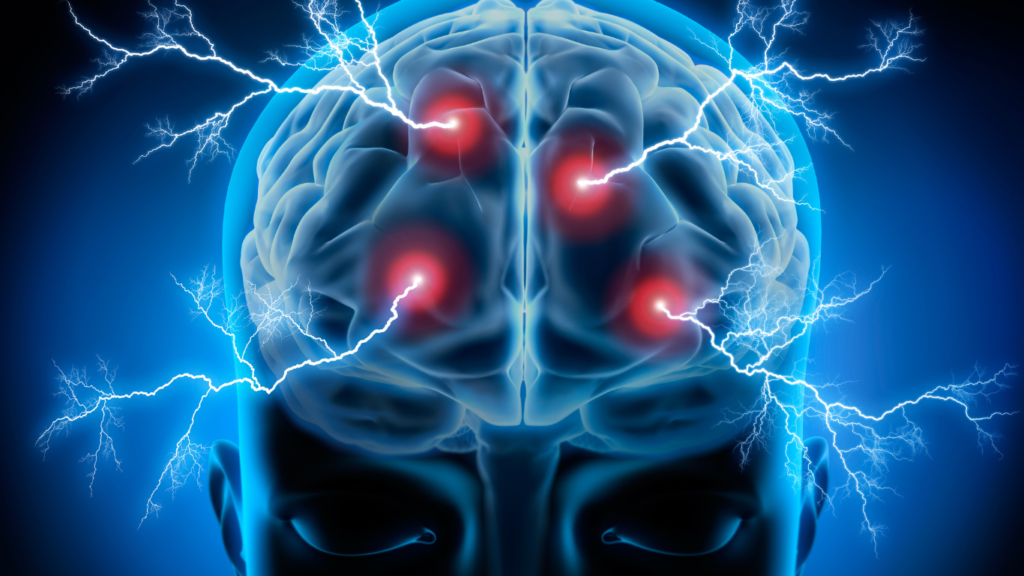
The primary cause of migraine seems to stem from a dysfunction in the brain’s pain-processing systems, particularly the trigeminal nerve system, and changes in brain chemicals such as serotonin (Goadsby et al., 2006). This dysfunction can take different forms. Lets look at what causes migraines and how these migraines differ.
1. Ocular Migraine Causes
Ocular migraines, also known as retinal migraines, are characterized by visual disturbances or loss of vision in one eye. While less common that other types of migraines, they can be alarming. The causes of ocular migraines can include:
- Retinal Vasospasm: This involves the narrowing of the blood vessels in the retina, reducing blood flow and causing visual symptoms (Kane et al., 2009).
- Migraine Aura: Sometimes, ocular migraines are a type of migraine aura where visual disturbances precede or accompany the headache phase (Schürks et al., 2008).
2. Eye Migraine Causes
Eye migraines, or visual migraines, are different than ocular migraines because they do not primarily affect the retina. However, like ocular migraines, eye migraines cause temporary vision disturbances or eye pain. The eye migraine triggers include:
- Visual Stress: Overuse or strain of the eyes, especially in individuals with uncorrected vision problems, can contribute to eye migraines (Cheng et al., 2017).
- Migrainous Neuralgia: Pain originating from the trigeminal nerve can also affect the eye region (Hershey et al., 2006).
3. Aura Migraine Causes
Aura migraines are preceded by sensory disturbances known as aura, which can include visual disturbances, sensory symptoms, or motor symptoms. For this type of migraine headache, causes are thought to include:
- Cortical Spreading Depression (CSD): A wave of neuronal depolarization followed by suppression spreads across the cortex, leading to aura migraine symptoms (Brodie et al., 2005).
- Genetic Predisposition: Individuals with a family history of migraines may be more prone to experiencing aura (Peters et al., 2016).
4. Chronic Migraine Causes
Chronic migraines are defined as having headache symptoms on 15 or more days per month. Chronic migraine causes include:
- Progression of Episodic Migraine: Repeated migraine attacks can cause chronic migraine due to changes in the brain’s pain pathways and central sensitization (Buse et al., 2012).
- Medication Overuse Headache (MOH): Frequent use of headache medications can contribute to the development of chronic migraine (Rizzoli et al., 2010). Researchers observed that use of natural migraine preventatives (such as Petadolex and Dolovent) do not cause MOH and may help break the cycle by reducing migraine frequency and severity and thus reducing the regular need for migraine and pain medication.
What Causes Migraines: Environmental/Situational Migraine Triggers
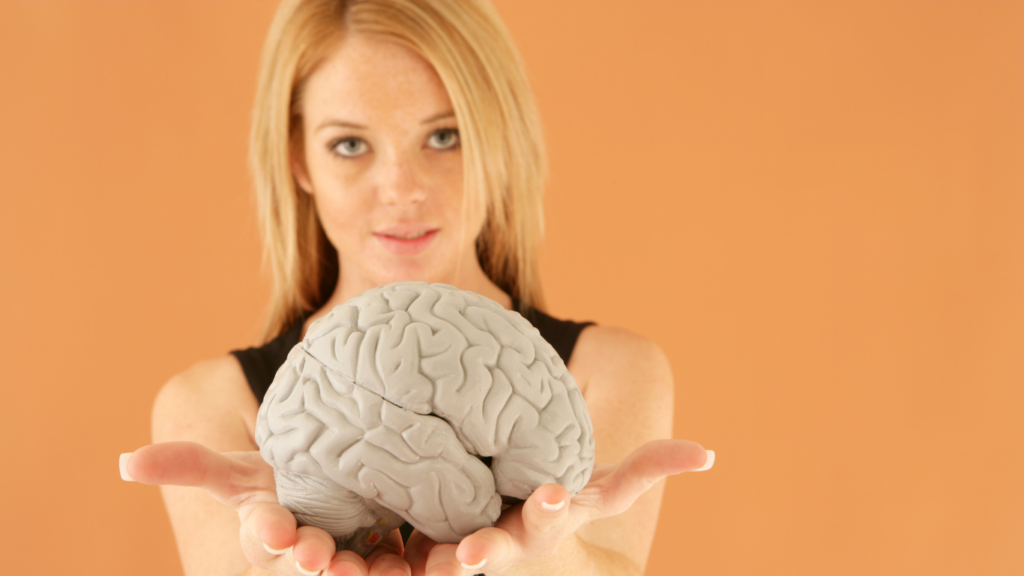
Migraine environmental factors as well as situational triggers can provoke or exacerbate attacks. Not everyone is sensitive to every migraine trigger, but the triggers below are commonly cited by migraine sufferers who have used a migraine diary or other means to identify their unique sensitivities. These triggers put in motion the biological and chemical reactions that cause the migraine attack itself.
1. Stress and Migraines
Stress is well-documented among migraine causes. Stress activates the hypothalamic-pituitary-adrenal axis, leading to increased cortisol levels and altered pain perception (Diener et al., 2009).
- Chronic Stress: Prolonged exposure to stress can increase migraine frequency and severity (Gordon et al., 2009).
2. Migraine Environmental Factors and Sensory Triggers
Migraine environmental factors and sensory triggers play a significant role in migraines. Common examples include:
- Bright Lights: Exposure to intense or flickering lights can trigger migraines (Sheftell et al., 2005).
- Strong Odors: Perfumes, chemicals, and other strong smells can act as migraine triggers (Hernández et al., 2017).
- Loud Noises: Exposure to loud or sudden noises can provoke migraines (Lipton et al., 2008).
3. Hormonal Migraines
Hormonal changes are a significant factor for many women who experience migraines. Hormonal migraines are often associated with:
- Menstrual Cycle: Estrogen fluctuations during the menstrual cycle can trigger migraines (MacGregor, 2006).
- Pregnancy and Menopause: Hormonal changes during pregnancy or menopause can also influence migraine frequency (Lipton et al., 2001).
4. Dehydration Migraine
Dehydration can be a trigger for migraines. Reduced fluid levels can cause decreased blood volume and electrolyte imbalances, contributing to headache onset (Papadopoulos et al., 2016).
5. Food Triggers for Migraines
Certain foods and beverages are known to trigger migraines in some individuals. Common dietary triggers include:
- Aged Cheeses and Processed Meats: These contain tyramine, which is may be a root cause of migraines (Tfelt-Hansen et al., 2010).
- Alcohol: Alcohol can dehydrate you and cause blood vessels to expand. Alcohol may also contain congeners (an inflammatory byproduct of fermentation) and histamine. Histamine can cause vascular headaches and stimulate the immune system to produce more histamine which increases inflammation.
- Chocolate: There isn’t hard evidence to confirm that chocolate is truly a migraine trigger but it does contain ingredients that can irritate the central nervous system and interfere with blood sugar regulation. Some of these ingredients include: cocoa which may play a role in increasing serotonin (a neurotransmitter that increases during a migraine attack), sugar which can interfere with blood sugar regulation and cause the release of hormones that affect blood vessels in the head and face, and another key ingredient—caffeine (see below)
6. Caffeine and migraines
Like chocolate, caffeine has stimulant effects and affects neurotransmitter levels (Fang et al., 2010). For some people, caffeine and migraines go hand in hand.
- Caffeine Overdose: Too much caffeine is known to cause headaches. Unfortunately, it is easy to overdo. High levels of caffeine can be found not just in strong coffee and energy drinks, but also in items like chocolate ice cream, orange soda, bottled water and even medications.
- Caffeine Withdrawal: Abrupt cessation of caffeine intake can lead to withdrawal headaches, which may be mistaken for migraines (Buse et al., 2012).
- Caffeine Consumption: Moderate caffeine intake may be beneficial for some individuals by enhancing the efficacy of migraine medications (Fang et al., 2010).
7. Sleep and migraines
Sleep patterns have a significant impact on migraine frequency and severity:
- Sleep Deprivation: Insufficient sleep can trigger migraines by altering brain function and pain pathways (Bowers et al., 2007).
- Irregular Sleep Patterns: Changes in sleep routines or disruptions can also contribute to migraine attacks (Schürks et al., 2009).
8. Migraine Weather Sensitivity
Weather changes can trigger migraine frequency and severity:
- Barometric Pressure Changes: Fluctuations in barometric pressure can contribute to what causes a migraine for some individuals (Haar et al., 2016).
- Temperature Extremes: Extreme temperatures or humidity levels can also act as migraine triggers (Schoenen et al., 2014).
Conclusion
As we’ve seen in this article, migraine causes are highly individualized and can involve multiple contributing factors. Triggers are different, person to person. Medications that work well for some may have little effect on others, and treatments can come with side effects that limit their use.
The complexity of the central nervous system and the brain’s role in processing pain make it challenging to pinpoint migraine headache causes and treatments that are both effective and have minimal side effects.
Until we know more, the best way to address migraine causes is to start with a migraine diary where you record your food and activities and note when migraines occur. Knowing your triggers, you can minimize your unique migraine causes with a plan that emphasizes prevention, including lifestyle changes and getting ahead of what causes your migraines by using well-documented and effective migraine preventive supplements such as Petadolex (butterbur extract) and Dolovent (a blend of three nutrients known to support brain health). This can significantly improve your migraine management — and quality of life.
Sources
- Bowers, A. W., Morris, B., & Gruber, M. (2007). Sleep and migraine: A review. Current Pain and Headache Reports, 11(5), 368-373.
- Brodie, M. J., & Scherfler, C. (2005). Cortical spreading depression and migraine: Pathophysiology and therapeutic implications. Journal of Neurology, 252(4), 149-157.
- Buse, D. C., Lipton, R. B., & Scher, A. I. (2012). The prevalence of chronic migraine in the United States: Results from the American Migraine Prevalence and Prevention Study. Headache, 52(10), 1448-1464.
- Cheng, X., Fuh, J. L., & Wang, S. J. (2017). Visual migraine and ocular migraine: Clinical characteristics and management. Neurology, 88(5), 484-493.
- Diener, H. C., & McGregor, A. (2009). Stress and migraine: A review of the literature. Current Pain and Headache Reports, 13(6), 461-468.
- Fang, J., Zhuang, J., & Zhang, S. (2010). The impact of dietary caffeine on migraine attacks. Headache, 50(6), 1087-1097.
- Gordon, J. D., & Garber, J. (2009). The role of stress in migraine pathogenesis. Current Neurology and Neuroscience Reports, 9(3), 207-212.
- Haar, G. T., Scher, A. I., & Koury, J. (2016). Weather sensitivity and migraine: A review of clinical and experimental studies. Headache, 56(3), 412-423.
- Hernández, M., Parra, J. A., & Pereda, A. (2017). Sensory triggers of migraine: A comprehensive review. Cephalalgia, 37(8), 729-740.
- Hershey, A. D., & Hering, S. (2006). Neuralgia and other causes of eye pain. Current Opinion in Neurology, 19(3), 275-281.
- Kane, S. R., Pomeranz, M., & Fernandez, M. (2009). Retinal migraine: Clinical features and management. Survey of Ophthalmology, 54(1), 22-32.
- Kobayashi, M., Fujita, Y., & Yoshida, A. (2002). Sinus headache: Clinical features and management. Otolaryngology–Head and Neck Surgery, 126(6), 567-573.
- Lipton, R. B., Stewart, W. F., & Diamond, S. (2001). Prevalence and burden of migraine in the United States: Data from the American Migraine Study II. Headache, 41(7), 646-657.
- Lipton, R. B., & Stewart, W. F. (2008). The role of caffeine in migraine and other headache disorders. Current Pain and Headache Reports, 12(2), 118-122.
- MacGregor, E. A. (2006). Hormonal influences in migraine. Headache, 46(4), 139-147.
- Papadopoulos, M., & Jass, G. (2016). Hydration and migraine: A review. Pain Medicine, 17(5), 940-945.
- Peters, M., & Kauffman, R. (2016). Genetic influences on migraine susceptibility. Current Opinion in Neurology, 29(3), 337-343.
- Rizzoli, P., & Bigal, M. E. (2010). Medication overuse and chronic migraine: Mechanisms and management. Neurology, 75(7), 587-593.
- Schürks, M., Rist, P. M., & Bigal, M. E. (2008). Migraine and the risk of stroke: A systematic review and meta-analysis. Neurology, 70(5), 356-363.
- Schürks, M., & Buring, J. E. (2009). Sleep and migraine: A review of the literature. Cephalalgia, 29(2), 125-131.
- Sheftell, F. D., & Scher, A. I. (2005). The role of environmental factors in migraine. Current Pain and Headache Reports, 9(4), 223-228.
- Schoenen, J., & Lucas, S. (2014). Weather sensitivity and migraine: Clinical implications. Cephalalgia, 34(6), 458-465.
- Tfelt-Hansen, P., & Scher, A. I. (2010). Dietary factors and migraine. Headache, 50(6), 1011-1018.
Understanding the complex interplay of these factors can assist healthcare providers in developing personalized treatment plans and preventive strategies for individuals suffering from migraines.

